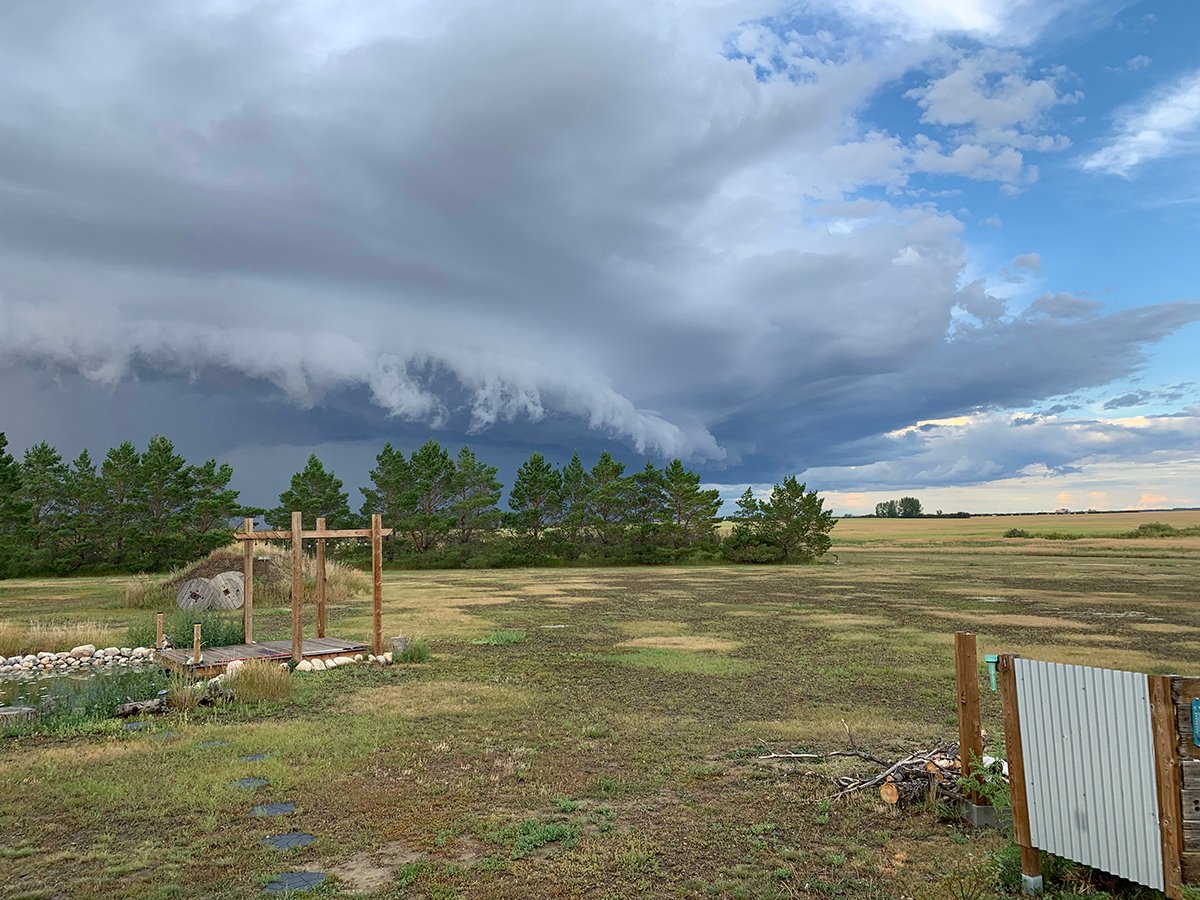Another 530 kilometres of prairie branch lines have been slated for abandonment.
Canadian National Railway last week announced it was discontinuing service on seven Saskatchewan lines, none of which has carried rail traffic for at least the past three years.
The announcement signals the end of a self-imposed moratorium on abandonments adopted by the rail company in 2001.
Peter Marshall, CN’s senior vice-president for the western region, placed responsibility for the abandonments on other players in the industry.
“Over the past four years, farmers, grain companies and other grain industry interests have made major changes in the way they market and move grain,” he said.
Read Also

Storm dynamics and extreme rainfall
Besides moisture, instability and orographic lift, the next biggest factor that contributes to heavy or extreme rainfall is storm dynamics.
“These changes have made certain sections of CN’s Saskatchewan network redundant – the lines are no longer being used.”
The lines being discontinued include some sections that were to become part of a rail network in northwestern Saskatchewan operated by a grassroots farmer organization called Prairie Alliance For the Future, or PAFF.
The idea behind PAFF was for farmers and other community groups to set up local co-operatives to gather grain and load rail cars. The arrangement would have allowed farmers to bypass the country elevator system and realize significant savings.
However droughts in 2002 and 2003, followed by a late harvest and poor quality crop in 2004, torpedoed the organization’s hopes and it went out of business this spring.
At that time, PAFF chair Roy Atkinson predicted that the lines involved would be abandoned.
“It’s no surprise,” Atkinson said last week, describing the move as a simple business decision for the railway.
“If you’re in the business of running a railroad and you’re not getting any revenue from the extremities, you try to shift out the costs and download the inefficiencies.”
Marshall said that during the moratorium on abandonments, the railway worked with farmers and other interested parties to develop innovative ways to meet local transportation needs.
While there have been some successes, such as West Central Road and Rail, based in Eston, Sask., other initiatives, including PAFF, have failed.
“We believe that farmers’ local shipping patterns in the areas served by these branch lines are now well-established and it’s time for CN to make changes to its network,” said Marshall.
The lines were listed in the railway’s official three-year plan as candidates for discontinuance, the first step in the formal abandonment process laid out in the Canada Transportation Act.
Under the terms of the CTA, after the lines have been listed in the network plan for 12 months, the rail company must publicly advertise them for sale, lease or other transfer to third parties for continued operation.
Failing that, the lines must then be offered to federal, provincial and municipal governments. If no transfer can be arranged, then the line can be discontinued.
Atkinson said the ultimate fate of the old PAFF lines rests in the hands of local communities.
“If local leadership decides to do something positive, it can be done,” he said. “If they continue to vacillate and sit around, they’re gone, there’s no question about it.”
The act also requires the railways to pay local municipalities compensation of $30,000 per discontinued mile over three years following abandonment. That means CN will be required to pay approximately $10 million to affected municipalities.
The lines listed for discontinuance, all in Saskatchewan, are:
- The Lewvan subdivision between Minard Junction and Rowatt, covering 172 km.
- The Northgate spur between Lampman and Northgate covering 62 km.
- The Turtleford subdivision between Hamlin and St. Walburg, covering 108 km.
- The Bolney spur between Spruce Lake Junction and Paradise Hill, covering 25 km.
- The Robinhood subdivision between RH Junction and Glaslyn, covering 112 km.
- The Amiens spur between England and Spiritwood, covering 41 km.
- The Lillian spur between Lillian and Preeceville, covering 8.5 km.














